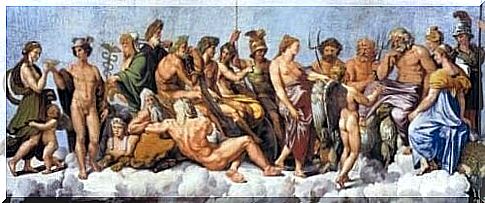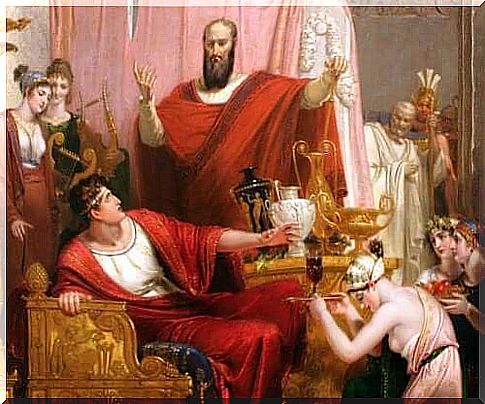Six Risk Groups Named After Divr In Greek Mythology

A risk is the degree of potential danger in a given situation. In other words, what dangerous things could happen. Understanding risks can help one avoid them, or at least be prepared when the time comes. As a result, Klinke and Renn have identified six risk groups and named them after divr in Greek mythology from 700-500 BC.
These mythological divrs represent man’s fear of being self-conscious and creating his own future instead of being the object of luck and chance.
There are six different risk groups: Damocles, Cyclops, Pythia, Kassandra, Pandora and Medusa. These risks are differentiated according to the probability of it happening, the damage it can do, and what we know about it.
Six risk groups
The first on the list of risk groups: Damocles
Damocles stands out in Greek mythology. He was one of Dionyssos’ courtiers. He believed that his king was fortunate to have power and wealth, and this made him an envious subject. To give him a lesson, Dionysus offered to swap places with Damocles for a single day.
Just that day there was a big party. Damocles loved to be treated like a king. At the end of the meal, however, Damocles looked up and saw a sharpened sword hanging directly over his head, hanging only in a single horsehair. Suddenly he was not so desperate for wealth and power. He immediately asked Dionyssos to swap places with him again.
The myth shows us the uncertainty that comes with great power. Not only can you suddenly lose your power, you can also lose your life. This kind of danger is seen in times of abundance.
Some examples of this type of risk are nuclear or meteor impact. It is highly unlikely that these things will happen. But if they were to happen, they would wreak havoc.

Risk group: Cyclops
A Cyclops is a one-eyed giant. Due to its reduced vision, its perception of reality is also reduced. This type of risk is difficult to estimate. The potential danger is catastrophic, but there is no way to measure it.
Earthquakes, volcanoes and weapons of mass destruction fall into this category. There is no chance of knowing when or if it will happen, but the damage it can cause is enormous.
Risk group: Pythia
When the ancient Greeks wanted to know the future, they went to their oracles. One of the most important was the Oracle at Delphi. The spokeswoman for this oracle was the priestess Pythia. When she had to make her predictions, she gassed herself and warned about the future. However, her predictions were always very ambiguous.
It is this type of risk where size, damage and probability are all unknown. An example is a sudden climate change or exposure to a biological or chemical substance. These risks, like others related to technology (eg genetic engineering), are difficult to identify.
Risk group: Pandora
One of the most controversial divr in Greek mythology is Pandora. The gods created Pandora as punishment, after Prometheus stole the fire to give it to man. She was so beautiful that no one could resist her.
Therefore, the gods at Olympus gave her the best gifts. One of these was curiosity, which led her to open the box in which all the evil of the world lay.
That story shows us how small things can cause great damage. Usually, we discover these risks when we realize that it is too late. A relevant example is climate destruction.
Risks like these spread easily, last over time and are irreversible. An example is chlorofluorocarbons. We used to think they were harmless, but later found out they were destroying the ozone layer.
Risk group: Kassandra
Kassandra was a damned seer in Troy. Her curse was to make prophecies that no one would ever listen to. She foresaw the fall of Troy, but no one listened to her because of her curse. In the end, she was right, as the Greeks later got out of the wooden horse they had given to the Trojans and took over the city.
These types of risks are different from the previous ones. In general, people are well aware of the likelihood that these things will happen and how much damage it can cause.
But because there is a delay between cause and effect, no one takes it really seriously. And not only that, but many of these risks are very likely to happen and can potentially cause major damage. Examples are climate change and the loss of biodiversity.
The last on the list of risk groups: Medusa
The last figure from Greek mythology that gives name to risk groups is Medusa. Medusa was one of the three Gorgonian sisters, and the only mortal of the three. No one dared come near her because it was said that she would petrify anyone who came near her.
This risk group is related to the myth of what you reject, despite the fact that it seems quite harmless. In other words, although the risk seems very high, there is no real evidence that it is particularly harmful. An example is electromagnetic fields. Their potential harm is low, but people feel they are affected by them.









